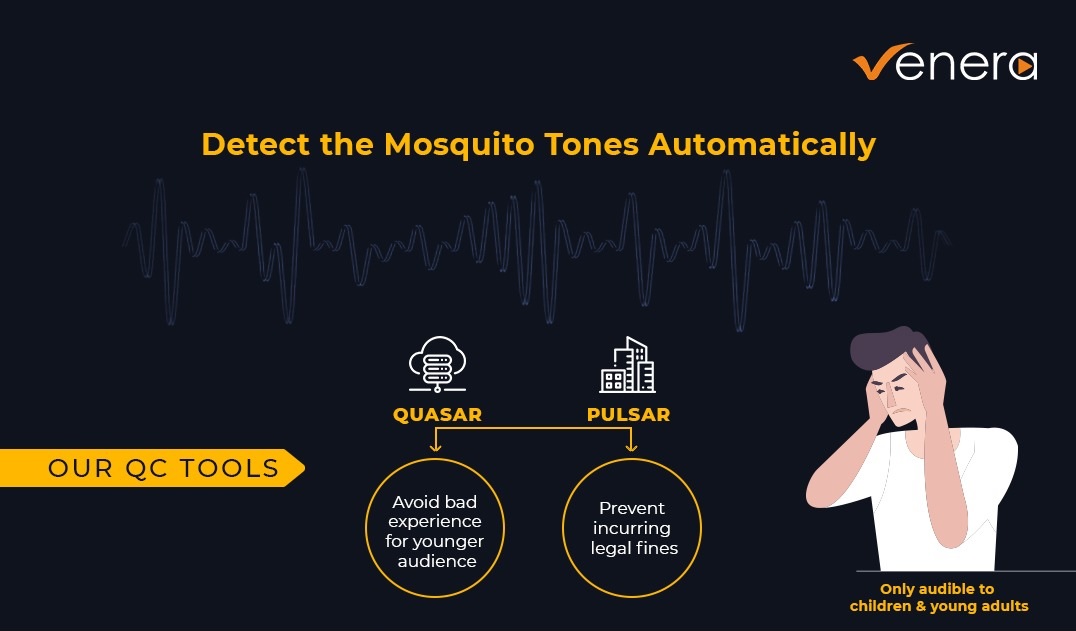Mosquito Tone! Does this give the impression that it has something to do with mosquitos?
Well, it does relate to tones with the buzzing sounds similar to the noise made by a mosquito but it is not directly related to ultra-sonic mosquito repellant devices in any way.
Humans can hear the sounds between frequencies of 20 Hz to 20 KHz.
Mosquito tones are high-frequency tones, normally above 17 KHz.

These tones are inaudible by adults but can be heard by teenagers. Yes, you read it correctly! Teenagers can hear mosquito tones but adults cannot. That is because it is normal for people to lose their hearing as they age and as a result, they are unable to hear the higher frequency sounds. With age, the audible audio frequency range continue to narrow down with losses towards the high frequency. The actual audible range can vary across individuals who are similar in age.
While there are both desired and undesired uses of mosquito tone in various applications, presence of mosquito tone is generally not acceptable in the media content delivered by various content delivery services. Presence of mosquito tones can cause severe degradation in user experience for the younger population. Infants & toddlers hearing systems can be severely impacted by the presence of such tones as the adults will not even notice their presence while unknowingly exposing kids to them for an extended period of time.
It is therefore important for content providers to ensure mosquito tones are not present in the delivered content. This is where the challenge comes in.
Most of the QC operators working with content providers are adults and as a result will inevitably miss the mosquito tone even if it is present in the content. So, performing a full manual QC of the audio is certainly not sufficient to detect this. Missing such signals can prove to be very expensive for content providers in terms of increased churn as well as related legal liability, as this could be potentially harmful to the public health. In case of delivery mediums like television, the negative effect could be very wide-spread due to the inherent broadcast nature of the delivery medium.
Therefore, since it is clear that manual QC for detection of these tones will not work, using a QC tool that can performance a reliable detection of mosquito tones is necessary.
Venera’s QC tools – Quasar & Pulsar, perform audio spectrum analysis and can reliably report the presence of mosquito tones in the content. Users have the flexibility to define the frequency range for these tones, and all the mosquito tones in that range will be reliably reported for user’s review. Moreover, all such tones can be detected in an automated manner, thereby improving the workflow efficiencies significantly while saving content providers from any claims downstream.
Visit www.veneratech.com/pulsar to read more about Pulsar™ and request a free trial.
Visit www.veneratech.com/quasar to read more about Quasar® and request a free trial.


